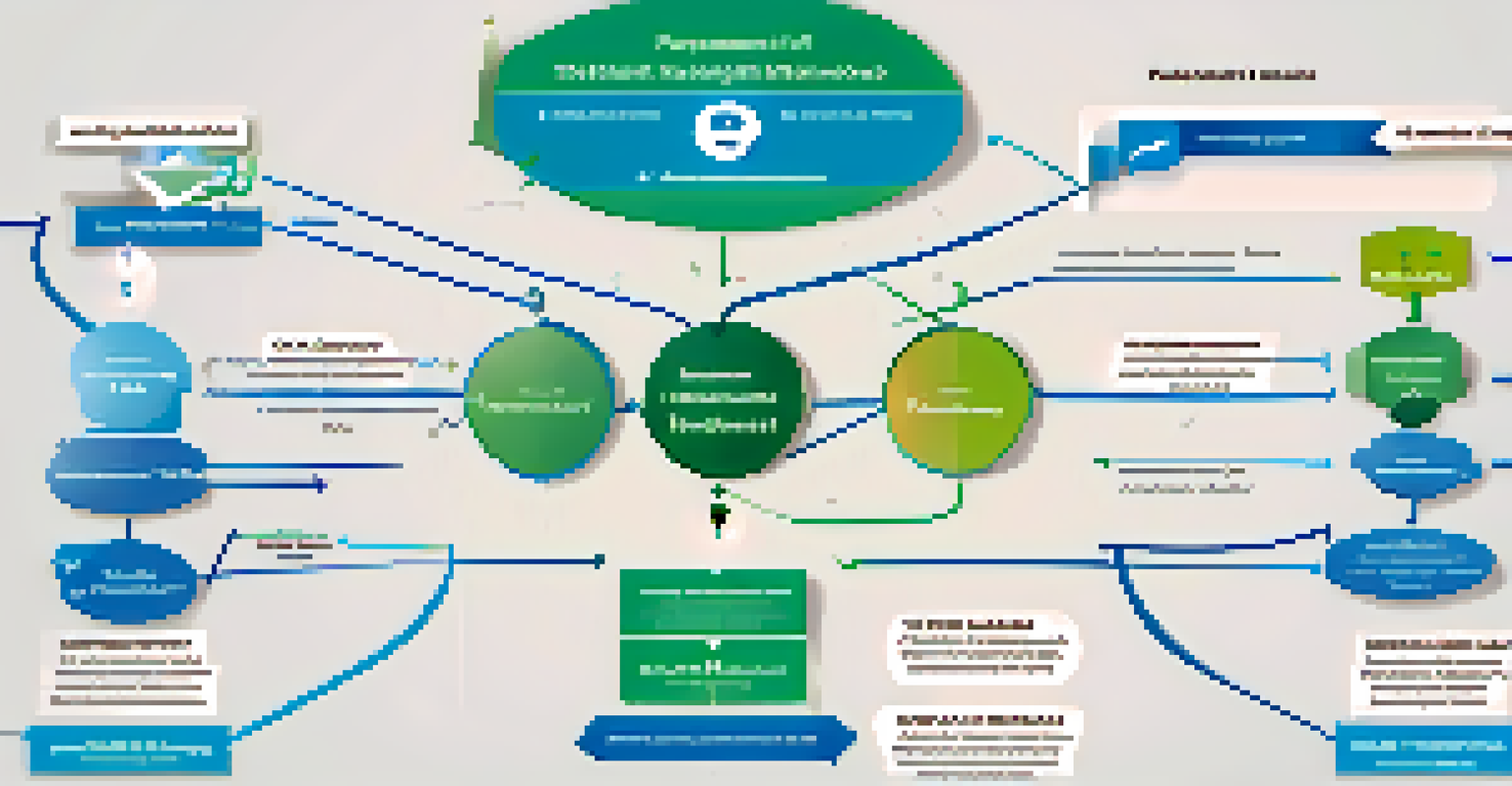Regulatory Challenges in Telehealth for Addiction Treatment

Understanding Telehealth and Its Importance in Addiction Treatment
Telehealth has emerged as a vital tool in addiction treatment, especially during the pandemic. It allows patients to access care from the comfort of their homes, reducing barriers like transportation and stigma. This digital shift has enabled healthcare providers to reach more individuals struggling with substance use disorders, making treatment more accessible.
Telehealth is a critical component of addiction treatment, offering a bridge to care that was previously inaccessible for many.
However, the effectiveness of telehealth in addiction treatment depends heavily on regulatory frameworks. These regulations dictate how care is delivered and reimbursed, influencing both patient engagement and provider participation. As telehealth continues to evolve, understanding these regulations is key to unlocking its full potential.
In essence, telehealth represents a significant advancement in addiction care. Yet, without clear and supportive regulations, the benefits may not be fully realized. It’s crucial for stakeholders to navigate these complexities to ensure patients receive the best possible care.
Key Regulatory Frameworks Governing Telehealth
Regulatory frameworks for telehealth vary widely across states and federal levels, creating a patchwork of rules that providers must navigate. Key regulations include licensing requirements, reimbursement policies, and privacy laws that safeguard patient information. Each of these components plays a critical role in how telehealth services are delivered and compensated.

For instance, some states require that healthcare providers be physically present in the state where the patient is located, complicating interstate care. This barrier can limit access for those in underserved areas who could greatly benefit from telehealth services. Understanding these nuances is essential for both providers and patients.
Telehealth Expands Access to Care
Telehealth provides vital access to addiction treatment, breaking down barriers like transportation and stigma.
Moreover, the regulatory landscape is constantly evolving, with changes often influenced by ongoing legislative discussions. Keeping up-to-date with these changes can empower providers to adapt their practices, ensuring they remain compliant while delivering effective care.
Challenges with Licensing and Interstate Practice
One of the most significant challenges in telehealth for addiction treatment is the licensing process for healthcare providers. Many states require practitioners to hold a license in the state where the patient resides, presenting hurdles for those who want to offer care across state lines. This can be particularly limiting for telehealth services aimed at patients living in rural or underserved communities.
The future of healthcare is digital, and we must adapt our regulations to ensure that telehealth can thrive in this new landscape.
The Interstate Medical Licensure Compact (IMLC) was created to streamline this process, but not all states participate. As a result, many providers still face complex regulations that can hinder their ability to provide timely and effective care. This not only impacts the availability of services but also poses a risk of treatment discontinuity for patients.
To address these challenges, advocacy for more uniform licensing standards is essential. By simplifying the licensing process, we can open doors for providers and ultimately improve access to vital addiction treatment services across state borders.
Reimbursement Issues in Telehealth for Addiction Services
Reimbursement policies play a crucial role in the sustainability of telehealth services for addiction treatment. Many providers depend on reimbursements from insurance companies to cover the costs of care, and discrepancies in these policies can create significant barriers. Some insurances may not cover telehealth visits at the same rate as in-person appointments, discouraging providers from offering remote services.
Additionally, reimbursement rates for addiction treatment can vary considerably from state to state, complicating financial planning for healthcare organizations. This inconsistency can lead to a lack of resources for providers, ultimately affecting the quality of care available to patients. Ensuring fair and consistent reimbursement rates is vital for the long-term viability of telehealth in addiction treatment.
Regulatory Challenges Persist
Complex licensing and reimbursement regulations continue to hinder the effectiveness of telehealth services in addiction treatment.
Advocacy efforts are underway to push for more equitable reimbursement policies that recognize the value of remote care. By aligning reimbursement structures with the realities of telehealth, we can encourage more providers to offer these essential services, thereby improving patient access and outcomes.
Privacy and Security Concerns in Telehealth
Privacy and security are paramount in healthcare, especially when dealing with sensitive issues like addiction. Telehealth platforms must comply with the Health Insurance Portability and Accountability Act (HIPAA), which sets strict standards for patient data protection. However, the rapid adoption of telehealth has raised concerns about whether all platforms can meet these stringent requirements.
Patients need to feel confident that their information is secure when seeking help for addiction. Any breaches of confidentiality can have serious consequences, deterring individuals from seeking the treatment they need. Therefore, providers must prioritize using secure and compliant technologies to protect patient information.
Moreover, educating patients on their rights regarding privacy can empower them to seek care without fear. By fostering a culture of transparency and security, we can build trust in telehealth services and encourage more individuals to pursue the support they need.
The Role of Technology in Overcoming Regulatory Barriers
Technology is not just a tool for delivering telehealth; it can also help navigate the regulatory landscape. Innovative platforms can streamline the compliance process, ensuring that providers meet licensing and privacy requirements efficiently. This can alleviate some of the burdens that come with navigating complex regulations, allowing providers to focus more on patient care.
For example, some telehealth services offer built-in features that ensure HIPAA compliance, making it easier for providers to maintain confidentiality. Additionally, automated systems can help track licensing requirements, alerting providers to any changes in regulations that could affect their practice. Leveraging technology in this way can promote a smoother operational flow.
Privacy is Essential for Trust
Ensuring patient privacy and compliance with regulations is crucial for encouraging individuals to seek help through telehealth.
By embracing these technological solutions, we can create a more supportive environment for telehealth in addiction treatment. This not only enhances the quality of care but also builds a more robust framework for compliance, ultimately benefiting both providers and patients.
Future Directions for Telehealth Regulation in Addiction Care
As the telehealth landscape continues to evolve, so too must the regulations that govern it. Policymakers are beginning to recognize the need for more adaptive and flexible frameworks that can keep pace with technological advancements. The future may see the introduction of more standardized regulations that facilitate interstate practice and equitable reimbursement.
In addition, there is a growing emphasis on integrating telehealth into traditional addiction treatment models. This holistic approach can enhance patient support and ensure that individuals receive comprehensive care that meets their unique needs. By combining in-person and remote services, we can create a more inclusive care environment.

Ultimately, the goal is to create a regulatory landscape that encourages innovation while prioritizing patient safety and access. With continued advocacy and collaboration among stakeholders, the future of telehealth in addiction treatment looks promising, paving the way for improved outcomes for those in need.